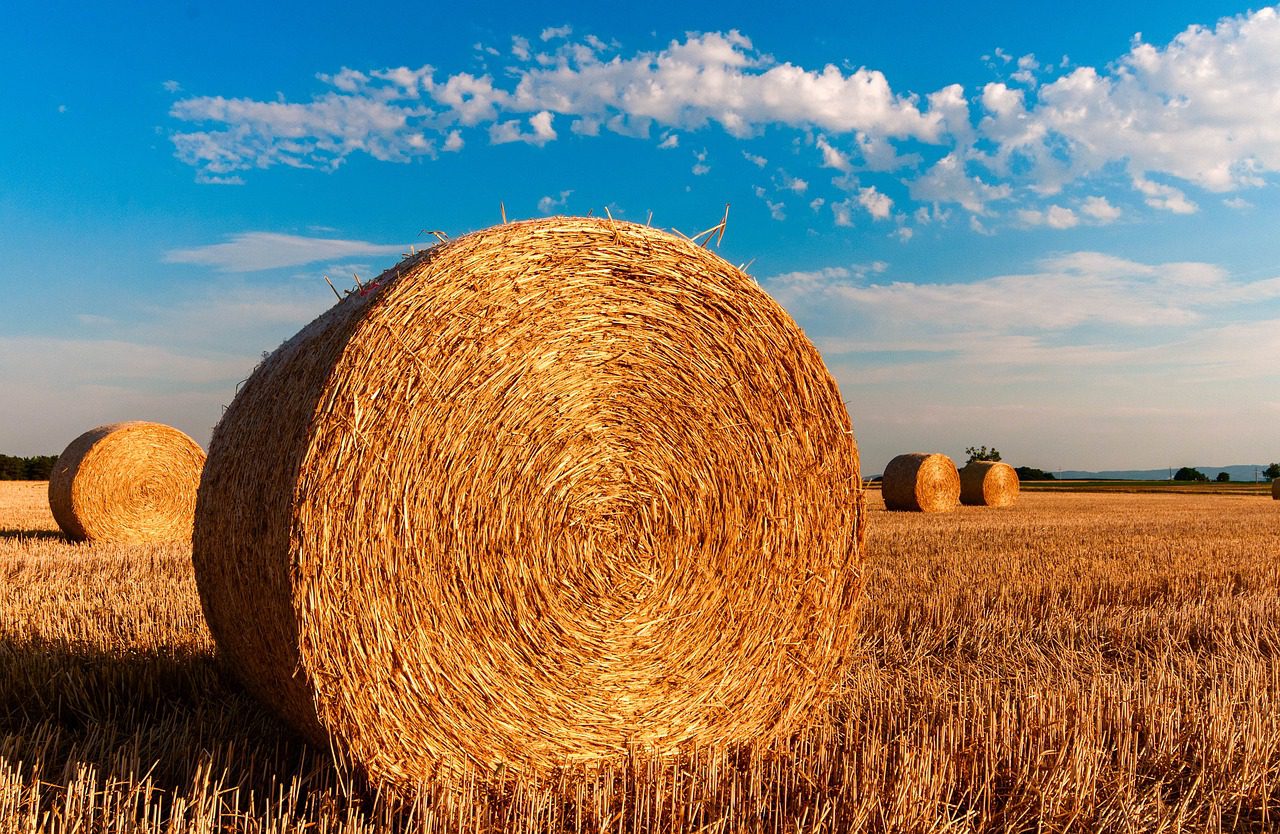See the takeaways from research into reducing round bale hay waste by a variety of organizations.
A UF/IFAS blog maintained that “Most ranches in the Southeast have the goal of producing or buying 4-6 round bales of hay or equivalent baleage (50-60% moisture) per cow/calf pair annually.” The blog is from proceedings of the 2024 NFREC Beef & Forage Field Day, which shared that “winter grazing can significantly reduce your reliance on hay or baleage, but most operations do not have enough acres of cool-season forage to rely solely on grazing from first frost to spring perennial pasture growth (mid-November through mid-April). Hay is typically the backbone forage of the winter supplementation program for cow-calf operations in this region. Since hay is such an import part of cow-calf production, it is also vitally important to minimize waste as much as possible.”
Hay prices and hay needs are often tracked and calculated, but “is often not tracked or calculated is the amount of waste that is an inevitably part of hay storage, transportation, and feeding.” The blog shared research from a variety of universities concerning reducing round bale hale waste. We share the takeaways from the research below.
Takeaways on Reducing Round Bale Hay Waste
The blog article shared the following takeaways from research concerning reducing hay waste:
- “Hay storage waste should be minimized as much as possible. Protect hay dry matter (tons to be fed) and nutrient content (hay quality) the best ways you can. Keep the bottoms of the bales dry with drainage or even better elevation, or a barrier from the ground to prevent dry matter waste. Protect bales from direct rainfall either with a cover, wrap, or barn roof to protect feed quality. If you are going to store hay outside, ensure bales are packed tightly with net-wrap, or even better with the new B-wrap, as opposed to string, and stack in well drained areas that allow the bottoms to dry out after heavy rain events.
– - Hay feeding waste can be considerable. Hay that falls on the ground and gets stomped on is likely not going to be eaten. The most efficient feeders are cone or basket feeders with solid sides to keep hay in the feeder, followed by ring feeders with solid sides. The most efficient feeders are typically much heavier to move and more expensive than the basic ring type feeders, so take feeder cost and weight into account before making purchase decisions. Any type of hay feeder is more efficient than simply feeding hay on the ground with free access by the herd. If you feed 5 850# round bales/per cow with a basic ring (no skirt), you are wasting ~20% or 850# (1 bale) per cow, worth $57. Use a ring with a skirt around the bottom and your waste is ~12%, then 510 pounds, or $34/cow. Use a basket @ ~5.5% waste = 234# or $16/cow, or a cone @ ~3.5% = 149# or $10/cow. The total hay waste on your farm may vary from the trial data summaries provided, but you can see the trend that investing in feeders that reduce hay waste can save money in the long run, if the feeders have similar life spans.
– - Easily portable hay feeders, such as the open rings, cradle, and trailer feeders are much simpler to move around the pasture, and may even reduce labor and fuel because they contain multiple bales. They also prevent nutrient build up, and reduce damage to permanent pastures, because they can be used over a larger area of the pasture. Depending on the design, they can also be significantly less efficient than other options, because more hay falls to the ground. You must evaluate the tradeoff between convenience, nutrient distribution, and pasture productivity with the amount of hay waste associated with the feeder design you select to use. I saw a wide range of designs and construction quality on display at the Sunbelt Ag Expo. I think the old saying of, “You Get What You Pay For” applies to hay feeders too. I did see a few examples of portable, multiple bale feeders that were also built to minimize the percentage of hay that reached the ground.”
Griffin Fertilizer is committed to helping both growers and ranchers make sound agronomic and economic decisions in order to maximize the health of their grove and pasture. As a full-service custom dry & liquid fertilizer blender and crop protection product distributor, we will continue our mission to further advance Florida agriculture. For questions -or concerns about your farm or pasture, contact us and one of our team will be in touch.

